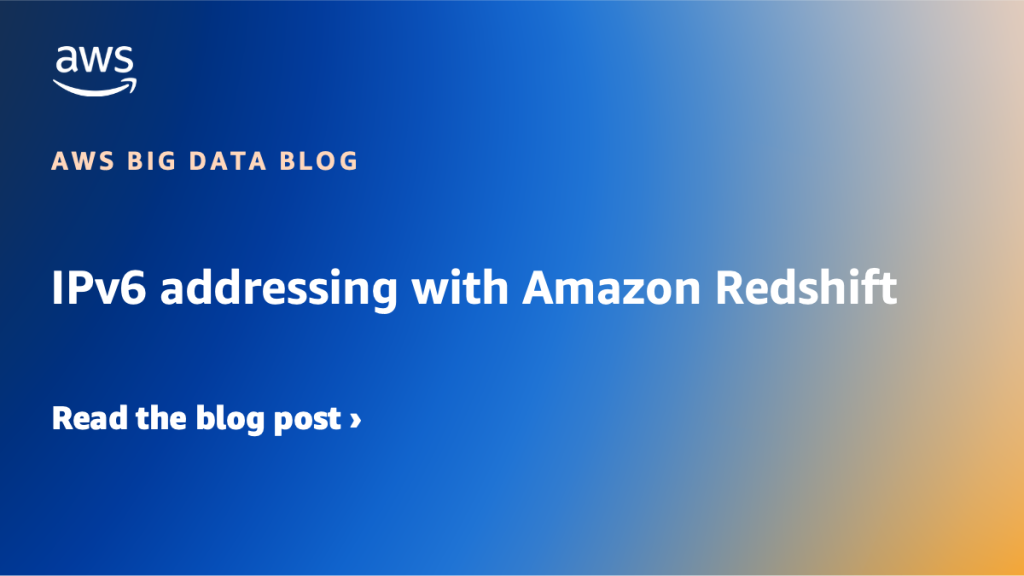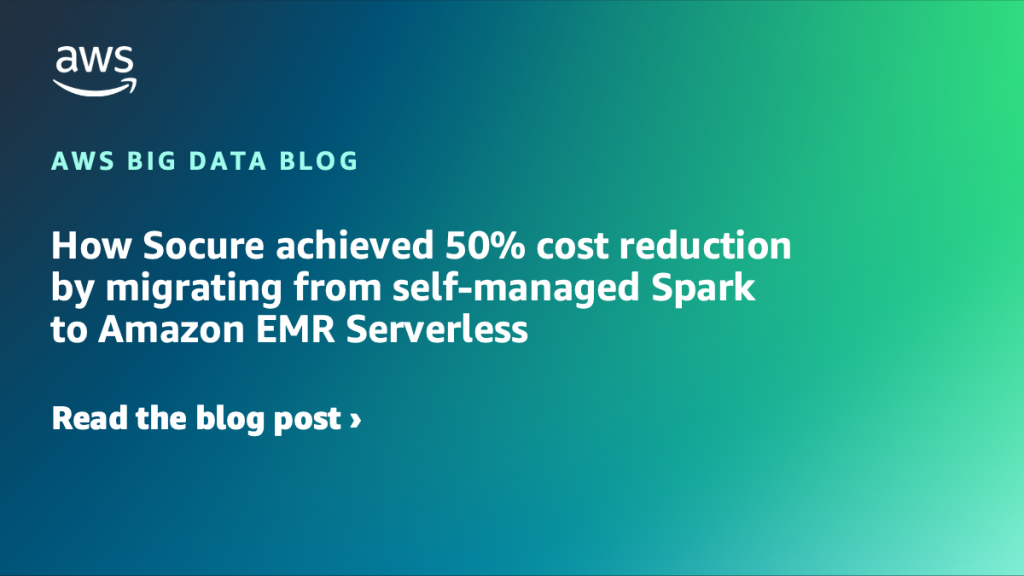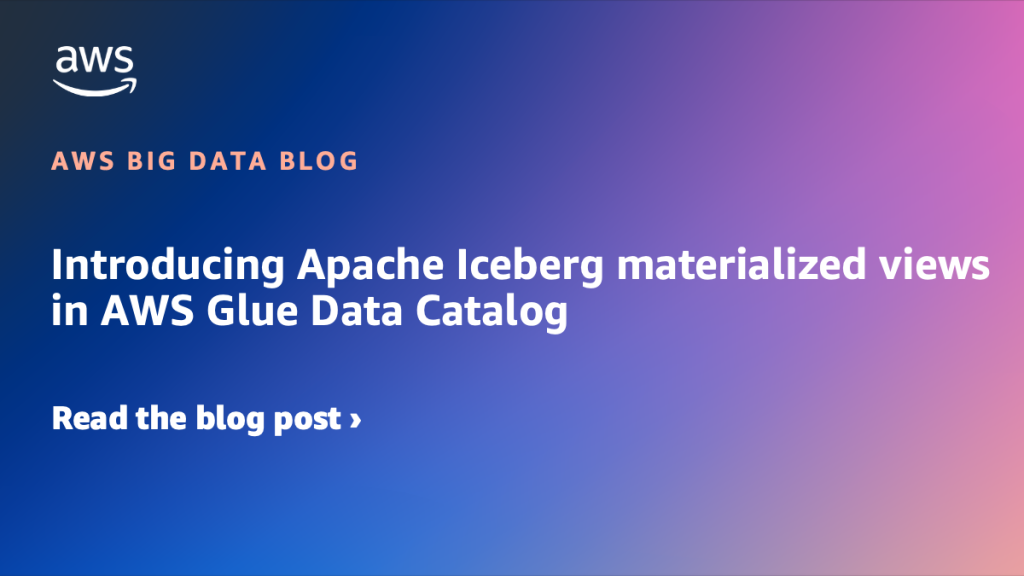AWS Big Data Blog
Category: Learning Levels
How Taxbit achieved cost savings and faster processing times using Amazon S3 Tables
In this post, we discuss how Taxbit partnered with Amazon Web Services (AWS) to streamline their crypto tax analytics solution using Amazon S3 Tables, achieving 82% cost savings and five times faster processing times.
Create and update Apache Iceberg tables with partitions in the AWS Glue Data Catalog using the AWS SDK and AWS CloudFormation
In this post, we show how to create and update Iceberg tables with partitions in the Data Catalog using the AWS SDK and AWS CloudFormation.
Power data ingestion into Splunk using Amazon Data Firehose
With Kinesis Data Firehose, customers can use a fully managed, reliable, and scalable data streaming solution to Splunk. In this post, we tell you a bit more about the Kinesis Data Firehose and Splunk integration. We also show you how to ingest large amounts of data into Splunk using Kinesis Data Firehose.
IPv6 addressing with Amazon Redshift
As we witness the gradual transition from IPv4 to IPv6, AWS continues to expand its support for dual-stack networking across its service portfolio. In this post, we show how you can migrate your Amazon Redshift Serverless workgroup from IPv4-only to dual-stack mode, so you can make your data warehouse future ready.
Reference guide for building a self-service analytics solution with Amazon SageMaker
In this post, we show how to use Amazon SageMaker Catalog to publish data from multiple sources, including Amazon S3, Amazon Redshift, and Snowflake. This approach enables self-service access while ensuring robust data governance and metadata management.
Introducing the Apache Spark troubleshooting agent for Amazon EMR and AWS Glue
In this post, we show you how the Apache Spark troubleshooting agent helps analyze Apache Spark issues by providing detailed root causes and actionable recommendations. You’ll learn how to streamline your troubleshooting workflow by integrating this agent with your existing monitoring solutions across Amazon EMR and AWS Glue.
Introducing Apache Spark upgrade agent for Amazon EMR
In this post, you learn how to assess your existing Amazon EMR Spark applications, use the Spark upgrade agent directly from the Kiro IDE, upgrade a sample e-commerce order analytics Spark application project (including build configs, source code, tests, and data quality validation), and review code changes before rolling them out through your CI/CD pipeline.
Accelerate Apache Hive read and write on Amazon EMR using enhanced S3A
In this post, we demonstrate how Apache Hive on Amazon EMR 7.10 delivers significant performance improvements for both read and write operations on Amazon S3.
How Socure achieved 50% cost reduction by migrating from self-managed Spark to Amazon EMR Serverless
Socure is one of the leading providers of digital identity verification and fraud solutions. Socure’s data science environment includes a streaming pipeline called Transaction ETL (TETL), built on OSS Apache Spark running on Amazon EKS. TETL ingests and processes data volumes ranging from small to large datasets while maintaining high-throughput performance. In this post, we show how Socure was able to achieve 50% cost reduction by migrating the TETL streaming pipeline from self-managed spark to Amazon EMR serverless.
Introducing Apache Iceberg materialized views in AWS Glue Data Catalog
Hundreds of thousands of customers build artificial intelligence and machine learning (AI/ML) and analytics applications on AWS, frequently transforming data through multiple stages for improved query performance—from raw data to processed datasets to final analytical tables. Data engineers must solve complex problems, including detecting what data has changed in base tables, writing and maintaining transformation […]









